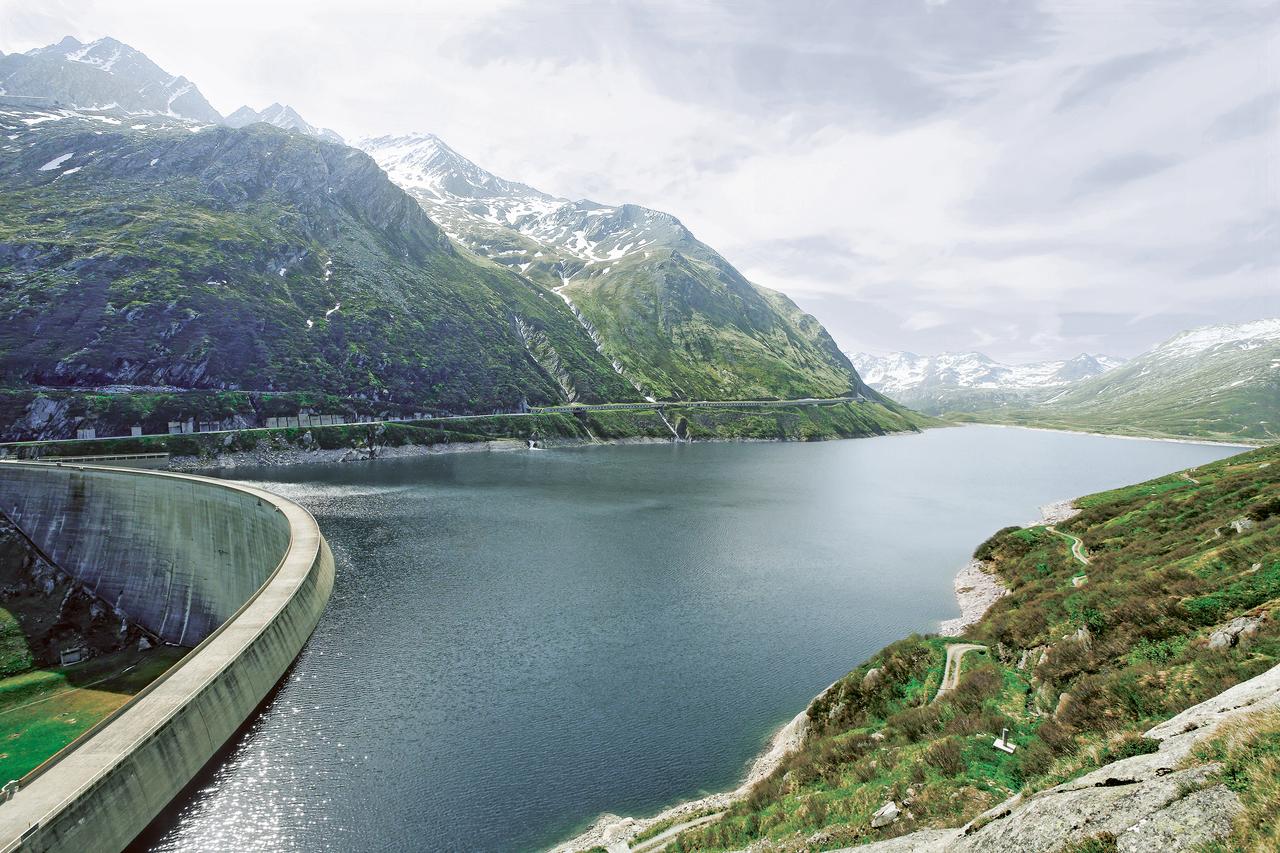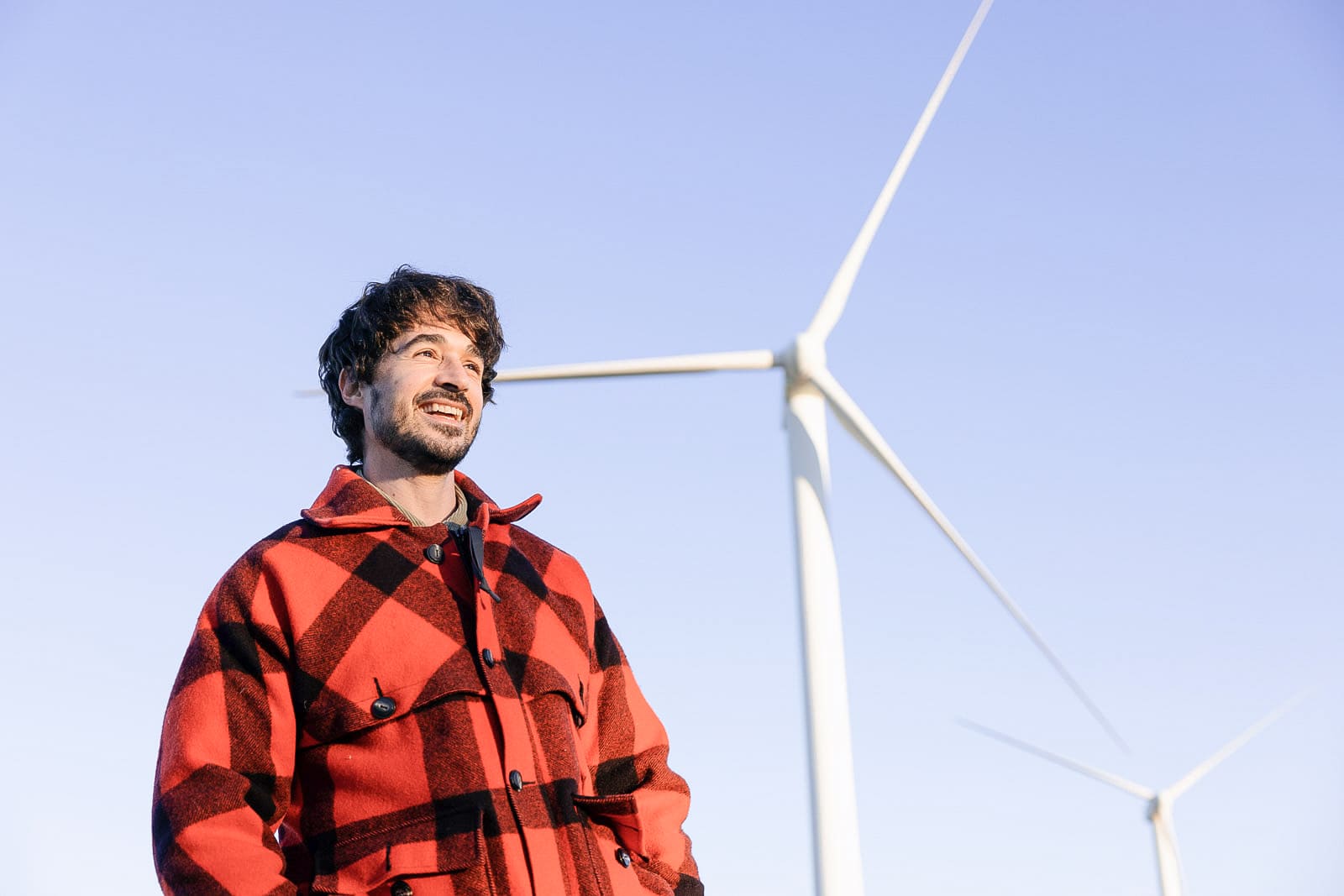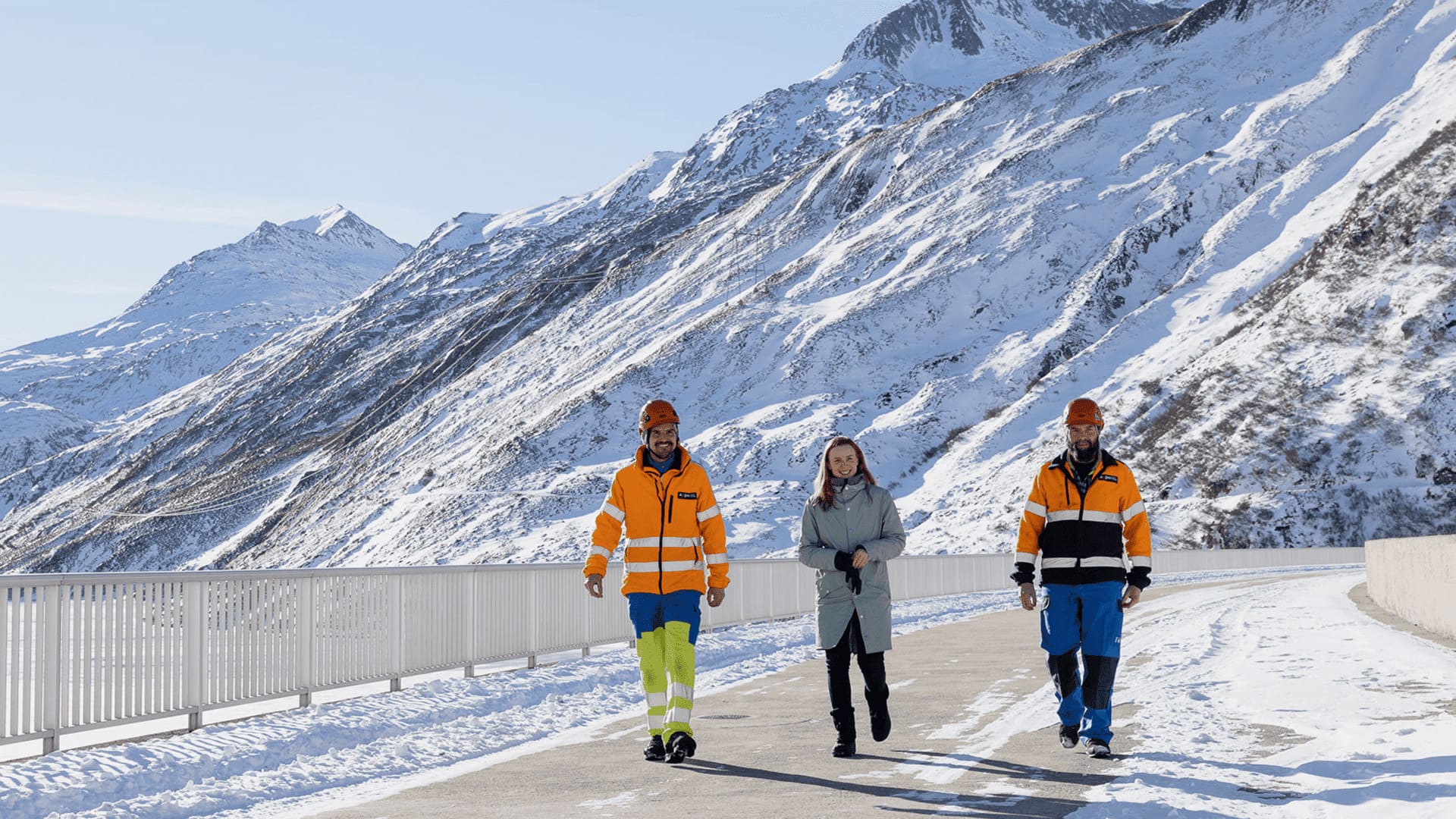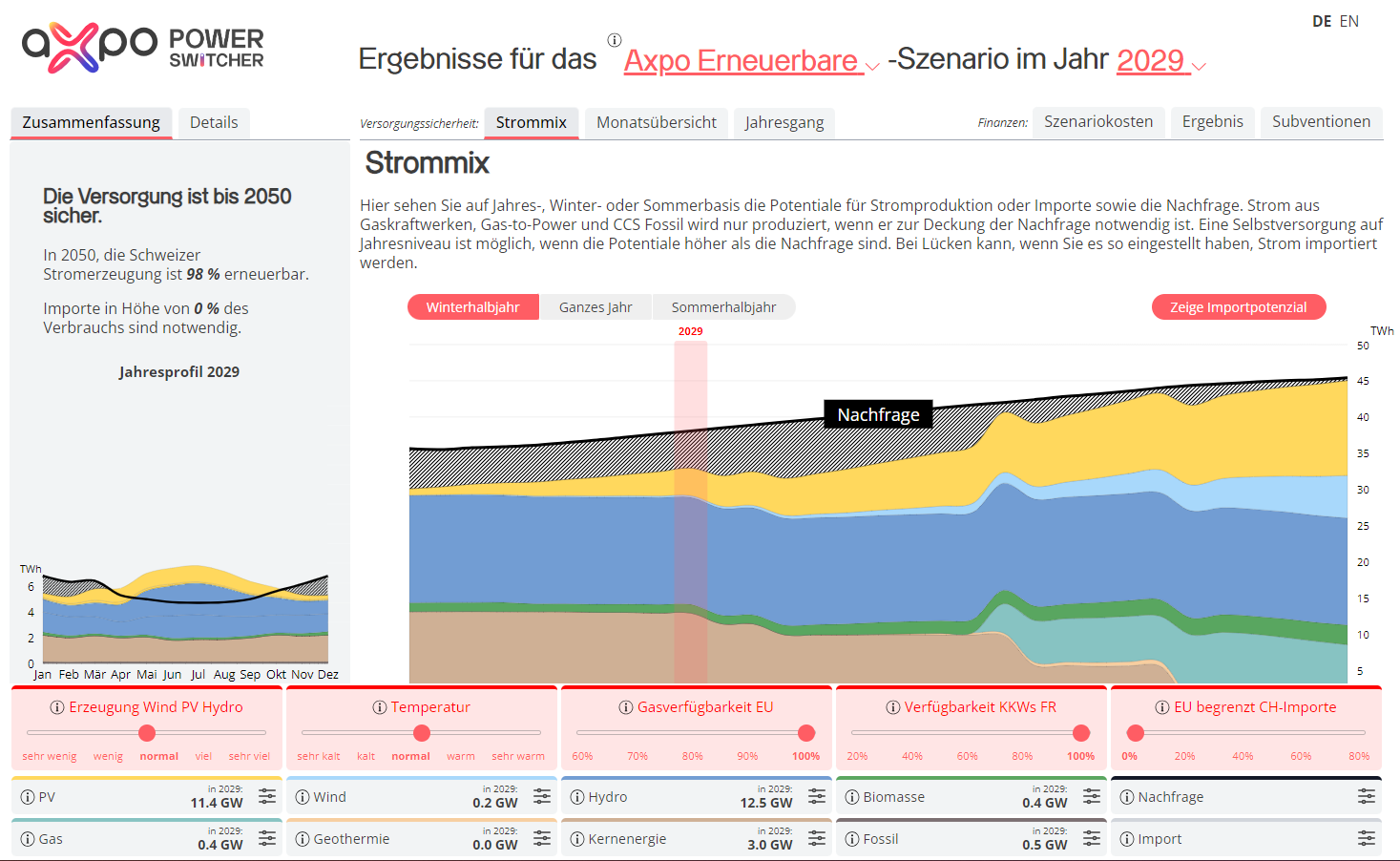07.05.2018 | Wind energy is an important market of the future for Axpo.
More than just a breeze
Axpo is the largest producer of renewable energies in Switzerland. Swiss hydropower, biomass, as well as wind energy at the best locations in Europe: The sustainable energy future has already begun at Axpo.
Wind energy is a regenerative energy source. Wind power plants extract kinetic energy from wind by means of a rotor. The rotor drives a generator that produces electricity (see box).
Among renewable energies, wind power is one of the most competitive technologies. Wind is available worldwide, climate-friendly and does not produce CO2. The technology is advanced and a cost efficient means of energy production.
On average, some 65 per cent of wind power is generated during the winter half-year – when the demand for power is high. As a result, wind energy plays an important role in the energy policy and strategy of many countries. However, it does have disadvantages (fluctuation, unpredictable supply, changes to the landscape, impacts on bird and wild life.
China in the lead
Wind energy is on the road to success internationally – also owing to government subsidy programmes. Worldwide, over 400,000 large wind energy plants currently produce renewable power. According to the Global Wind Energy Council, wind energy comprised over 3% of the total worldwide power consumption in 2016. Installed capacity amounted to 486,000 MW. Wind energy is used commercially in 103 countries (including Antarctica). The leaders in wind energy are China, the USA, Germany, India, Spain and England.
Switzerland: Not a typical wind country
Although Switzerland is not a typical wind country, the construction of wind power plants is attractive in certain locations. Although these plants do not deliver predictable energy, they are able to generate relatively large power volumes with modern facilities at cost-effective prices. Suitable sites for wind plants are located in the Jura Mountains, in the Prealps and Alps, and in western Central Switzerland. The Swiss wind atlas provides information on where and from where the wind blows in Switzerland by means of a model.
Switzerland currently has 37 wind energy plants. In 2016 they produced around 140 GWh of electricity. The largest wind farm is located on the Mont Croisin in the Bernese Jura near St. Imier. The facility includes 16 turbines with a total output of 37.2 MW and an annual production of 70 GWh. Other large plants are in operation in the Rhone Valley (VS), in Entlebuch (LU) and on the Gütsch above Andermatt (UR). You will find a map of all the wind energy plants in Switzerland under this link.
Based on the Energy Strategy 2050, wind energy plants in Switzerland will deliver 600 GWh of power by 2020, and by 2050 this number will rise to 4000 GWh – nearly forty times more than today’s production. However, in a statement the Association of Swiss Electricity Companies (VSE) writes: "Owing to the few commercially attractive locations, as well as conflicts with nature and environmental protection policies, it is questionable how much of this potential can actually be developed." As a result, other assessments estimate wind potential at only 1000 to 2000 GWh.
Axpo’s wind activities
Axpo is also active in the growth market of wind. However, two main challenges exist in order to realise feasible wind projects in Switzerland, says Christoph Sutter, Head of New Energies at Axpo. First of all, there are few locations with good wind conditions and good accessibility, and these sites often do not include wind-exposed mountain ridges. Secondly, the permit processes are very involved and the chances of success are often difficult to assess. "Although we would like to realise more wind projects in Switzerland, from an economic viewpoint it often makes more sense to concentrate on locations in other countries, such as Germany and France."
Axpo's current commitment reflects this situation. The Axpo portfolio includes wind farms in Germany with an installed capacity of 188 MW, in France with 151 MW and in Spain with 15 MW (La Penuca).


On the right track
Since the summer of 2015, Volkswind is a 100 per cent subsidiary of Axpo. The German company has already built 60 wind energy plants with 700 MW in Germany and France, and additional projects with a capacity of 4000 MW are under development. Hence, Axpo is on the right track. The acquisition of Volkswind has opened up additional options in the area of wind energy. Christoph Sutter: "Thanks to Volkswind, we have been able to establish ourselves in a market where we were previously not present, and that gives us the opportunity to achieve higher value added from the business with renewable energies." In addition to plant operation and power marketing, the Axpo business model includes the development, construction and sale of wind farms, as well as their management.
Axpo is also active as a power trader in the area of renewable energies. With a volume of 14,000 MW (spot market, origination and portfolio management) – mainly wind energy – the company is one of the leading renewable energy traders in Europe.
CKW activities
In Switzerland, Axpo's subsidiary CKW is involved in the wind business. Since the summer of 2013, CKW has been operating a wind energy plant with a gross capacity of 2.3 MW on the Lutersarni hillside (Entlebuch). Measuring 120 metres, the plant is about the same height as the Prime Tower in Zurich and produces power for about 600 four-person households (approx. 2.5 million kWh) annually.
Wind power: What it's about
Wind energy plants utilise the kinetic energy in the air. Modern wind power plants comprise a mast, a nacelle that holds the mechanical equipment, and a rotor usually comprising three rotor blades. The rotors begin turning at wind speeds of 2 metres per second (m/s). At a speed of 4 m/s a wind power plant generates electricity. The maximum output is reached at 12 to 15 m/s. As a rule, the wind turbine is turned off during storms to avoid damage. The ends of the rotor blades can reach speeds of over 200 km/h. Power production depends on the wind speed (power production proportional to the wind speed cubed). When wind speed is doubled, 23 or eight times more energy is produced.
Wind power plant technology is quite well engineered. Improvement potential primarily exists in the area of cost-effective design, manufacturing technology, overall efficiency, as well as in operational and maintenance concepts, which would result in lower production costs. The operational life of a plant is between 20 and 25 years. At that stage the plant can be repowered (replacement through a more modern, more efficient plant) or dismantled. The average power plant comprises 60-65 % concrete, 30-35 % steel and 2-3 % composite materials (such as glass fibre reinforced plastics) and less than 1 % copper.
During its runtime, a wind energy plant generates about forty times the energy needed for the manufacture, operation and disposal of the facility. The capacity of wind power plants has increased strongly over the last 25 years: onshore from 0.5 MW to 7 MW. Today new plants usually have a capacity of 2-3 MW. Selection of the capacity and tower height mainly depends on the local wind conditions. Offshore plants have a capacity of 5 to 7 MW. Currently, the most powerful wind plant type is the MHI Vestas V164 (as of January 2017) MHI Vestas V16 with a nominal Output 0f 9 MW.





.jpg)





